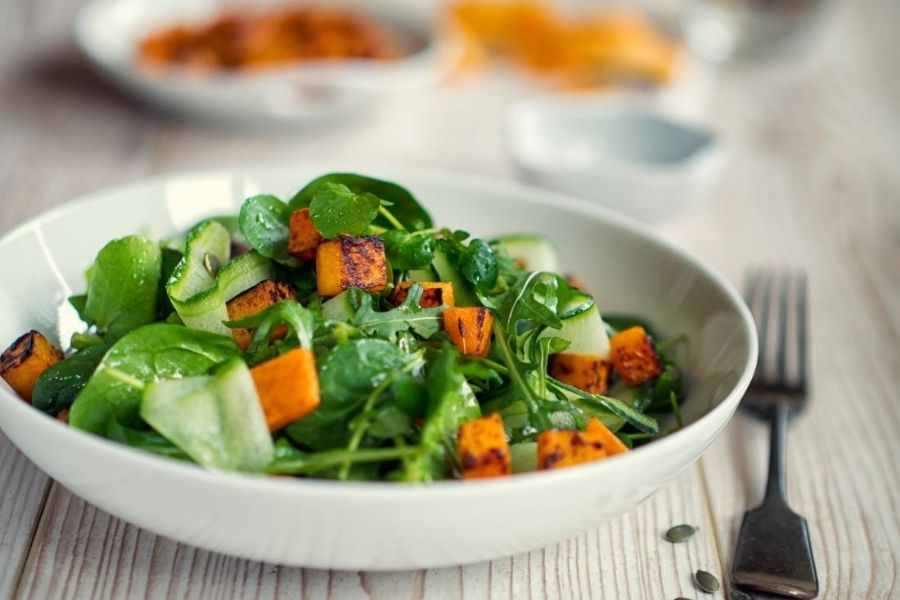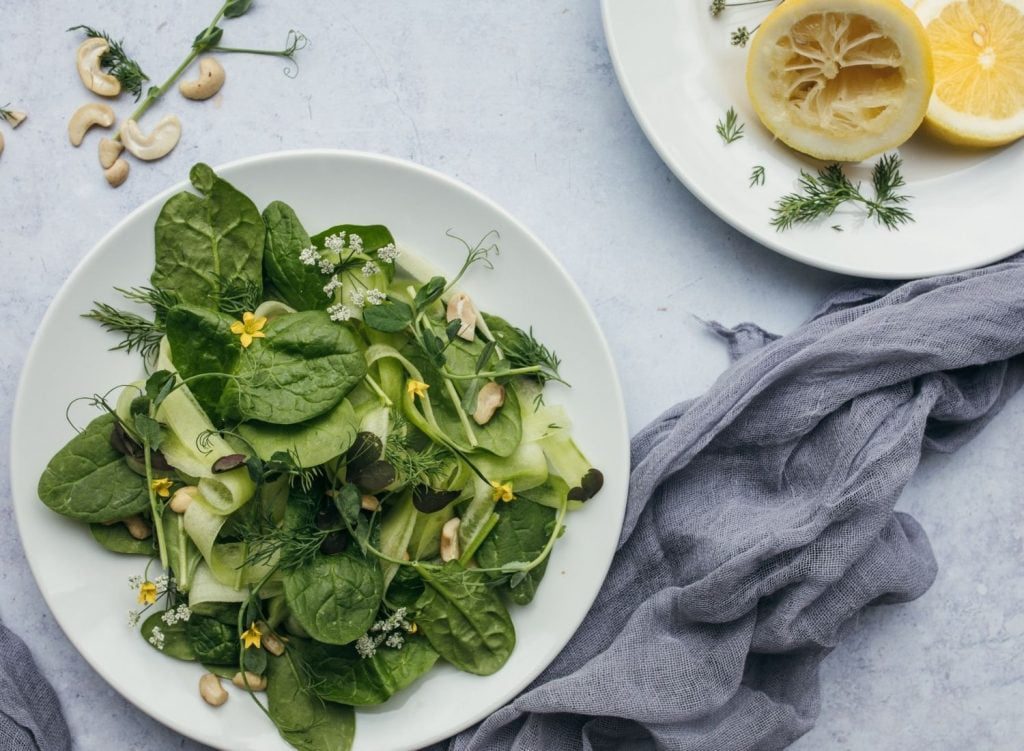Spinach is a package filled with powerful nutrients, whether in cooked or raw forms. So, what’s the deal? Why is there ‘cooked spinach vs. raw spinach’ tussle? Is spinach more nutritious cooked or raw? It depends on the method of cooking and what you are looking to get from eating spinach.
We assume that cooked and heated plant food has more nutrients than raw food, comparing by the cup to cup measurement. But this comparison is not fair as you get 1 cup of cooked spinach from 6 cups of raw spinach. Both cooked or raw spinach contains high levels of nutrients.
Benefits Of Raw Spinach

Raw spinach is a very nutrient-rich vegetable. Raw spinach contains oxalic acid; therefore, there is no need to eat raw spinach in high amounts. Many essential nutrients are present in raw spinach, such as folate, vitamin C, potassium, etc. Niacin and riboflavin are present in high amounts in raw spinach.
Benefits Of Cooked Spinach

When we cook spinach, its nutritional content increases. Higher levels of vitamins A, vitamin E, proteins, fibers, zinc, calcium, and iron are absorbed when consuming cooked or heated spinach. Carotenoids like lutein, beta-carotene, and zeaxanthin are also absorbed easily.
Macronutrients Content In Cooked And Raw Spinach

In every 100 grams of serving, both fresh and cooked spinach has the same amounts of macronutrients. 100 grams of serving is 3 1\3 cups of raw and 1\2 cup of cooked spinach. This spinach amount offers 23 calories, 3 grams of proteins, 0.3 grams of fat, 3.8 grams of carbohydrates, 2.4 grams of fibers, and 10% of the daily value.
Fibers are essential for our health. It decreases your hunger and lowers the risk of high cholesterol, high blood sugar, heart diseases, and digestive problems such as constipation and hemorrhoids.
Vitamins Present In Cooked And Raw Spinach

Cooked and raw spinach has major vitamin differences. The level of vitamins in both cooked and uncooked spinach is the main difference. Cooked spinach has more vitamins A, B6, and K. But 47 percent of vitamin C daily requirement is provided by raw spinach, whereas cooked spinach provides only 16 percent of vitamin C in each serving of 100 grams. When it comes to folate, the case is the same. Raw spinach provides 49 percent of the DV and 38 percent of cooked spinach.
Minerals Content In Cooked And Raw Spinach

The mineral content is very similar in both cooked and raw spinach. Both cooked and raw spinach provides an important amount of calcium, iron, magnesium, potassium, and manganese. But cooked spinach provides them slightly higher than the raw spinach, excluding potassium. These nutrients help maintain a healthy body. Calcium and magnesium strengthen the bones—iron help to form red blood cells. Potassium can prevent the adverse effect of sodium on blood pressure. For processing the cholesterol in the body, manganese is significant.
Iron Content In Spinach

The iron absorption depends on vitamin C, whereas tannins and polyphenols prevent the iron absorption of whether the spinach is cooked or not. One serving of 100 grams of raw spinach contains 2.71 milligrams of iron, and cooked spinach has 3.57 milligrams. This amount is twice as much as other leafy greens, stating that both raw and cooked spinach are a brilliant iron source. Before consuming too much spinach, remember your body contains iron already present because of the other nutrients.
Conclusion
Eating such plant food is good for our health. All the vegetables have advantages and disadvantages of consuming both cooked and raw forms. The richest collection of nutrients is provided by eating both cooked and raw spinach. But cooking vegetables makes it easy to consume in one go. You can limit the nutrient losses by changing the cooking method instead of leaching with water, long cooking times, and high heat. Try steaming and microwaving, which is the best way to maintain nutritional value.







